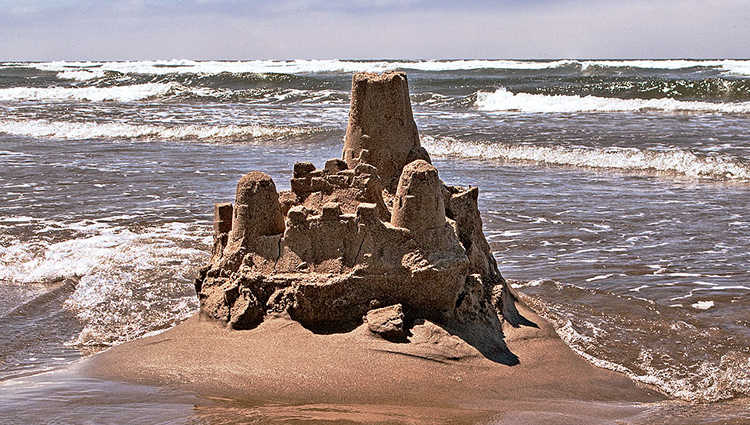Long-Lasting Sand Castles and Sturdy Buildings

(Inside Science) -- Beach-goers know that sand castles crumble almost as quickly as they are built, but scientists have long faced the mystery of why similarly-constructed earthen buildings can stand for centuries.
The secret to strong, long-lasting construction, according to Charles Augarde, a civil engineer at Durham University in England, is in the water. From sand castles to the Great Wall of China, the trick is finding the proper mix of sand, silt, and clay before adding water and pounding the mixture down into temporary frames that give walls their shapes.
That is how sculptors build world-record-sized sand castles and how ancient structures, including parts of the Great Wall, were constructed hundreds or even thousands of years ago.
These "rammed earth" techniques are gaining popularity as a method of constructing durable, energy-efficient buildings.
In his research into how the process results in strong structures, Augarde measured the internal water pressure between the grains of rammed earth walls and found that the strength of the walls comes from the small amount of water that is compressed into the tiny pores between grains of sand, gravel, and clay. There, the water creates suction that holds the wall together.
Too little water, and the walls don't stick together; too much, and they crumble.
This perfect balance of water and sand is the key to building elaborate and long-lasting sand castles, said Ted Siebert, a sand sculptor for more than 20 years. His sand creations have set several world records for their height and size. Although it's a decent way to make a living, "the work is not all fun and games," said Siebert. "There's a lot of physical work and engineering."
Siebert said that his team packs a layer of sand several inches thick into two-foot tall forms. Then they compress the sand and add another layer. When building for height, they construct a tiered structure so that the base can provide a stronger foundation for their creations.
While the construction technique is important, "the hardest part of this business is getting the right sand," said Siebert. Most of the time he can locate material with the right mix of grain sizes. His favorite is pure silt, but vendors have sold him sand so poorly sorted it contained rocks "the size of a five-gallon bucket," he said.
This process is similar for building a wall out of rammed earth. Builders start with strong frames that provide enough space for a wall at least one foot thick. They pack in the right mixture of material in layers and compress each layer with hand tools or a hydraulic rammer and then repeat the process many times.
In the United States, rammed earth is most popular as a construction technique in the arid and hot Southwest. Two foot-thick walls absorb heat during the day and release it slowly overnight. The walls act as a buffer, said Augarde, reducing the need for air conditioning.
Contractors and enthusiasts have used the technique in other areas (and climates) of North America, from Idaho to British Columbia, Canada. It's even an option in famously damp England. "It's actually down to how you build them, how you design the structures that keep water away from the building," said Augarde.
Earthquakes can pose problems for rammed earth structures because the material is "rather like a weak rock" said Augarde. Developing methods to reinforce new buildings and historically significant structures may help to protect against such damage.
To build a sand castle that will last, Siebert suggests finding good sand free of shells and coral, and then mixing it with water to form something like a pancake batter. Pack the mixture firmly into a five gallon bucket with the bottom cut out. Tap the outside of the bucket to release it from the sand, then lift it carefully. This should leave a cylinder that can be carved into the sturdiest, most impressive castle on the beach.
Sand sculpture photos available here.

